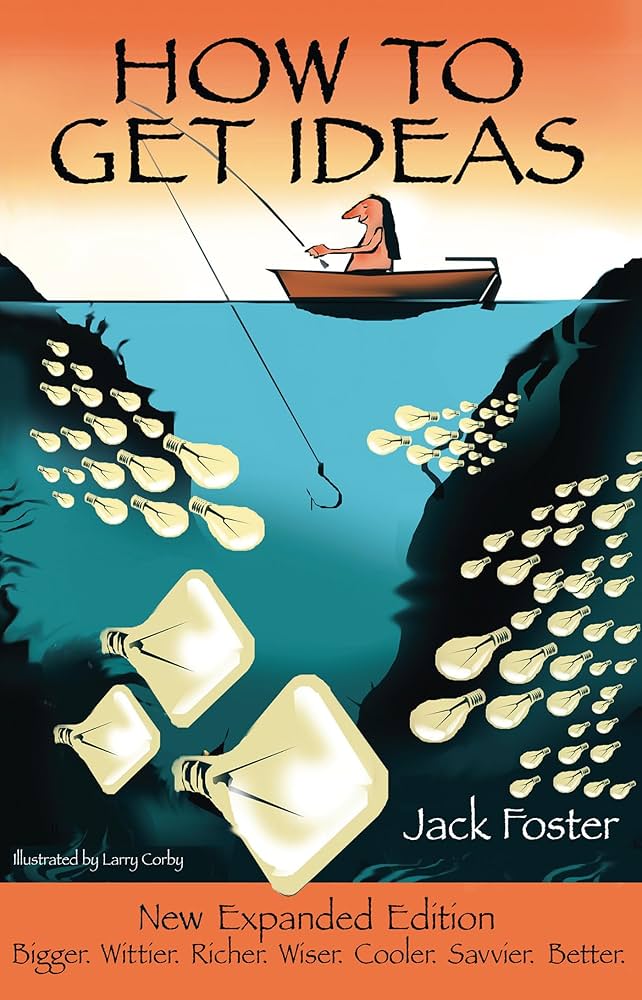
Preface
In A Technique for Producing Ideas, James Webb Young describes a five-step method for producing ideas.
- First, the mind must "gather its raw materials." In advertising, these materials include "specific knowledge about products and people [and] general knowledge about life and events."
- Second, the mind goes through a "process of masticating those materials."
- Third, "You drop the whole subject and put the problem out of your mind as completely as you can."
- Fourth, "Out of nowhere the idea will appear."
- Fifth, you "take your little newborn idea out into the world of reality" and see how it fares.
Hermann von Helmholtz, the German philosopher, said he used three steps to get new thoughts.
- The first was "Preparation," the time during which he investigated the problem "in all directions" (Young’s second step).
- The second was "Incubation," when he didn’t think consciously about the problem at all (Young’s third step).
- The third was "Illumination," when "happy ideas come unexpectedly without effort, like an inspiration" (Young’s fourth step).
In Predator of the Universe: The Human Mind, Charles S. Wakefield says there "is a series of [five] mental stages that identify the creative act.
- First, "is an awareness of the problem."
- Second, "comes a defining of the problem."
- Third, "comes a saturation in the problem and the factual data surrounding it" (Young’s first and second steps).
- Fourth, "comes the period of incubation and surface calm" (Young’s third step).
- Fifth, comes "the explosion—the mental insight, the sudden leap beyond logic, beyond the usual stepping-stones to normal solutions" (Young’s fourth step).
Introduction
- It’s that flash of insight that lets you see things in a new light, that unites two seemingly disparate thoughts into one new concept.
- An idea synthesizes the complex into the startlingly simple.
- It seems to me that these descriptions give you a better feel for this elusive thing called an idea, for they talk about synthesis and problems and insights and obviousness.
- An idea is nothing more nor less than a new combination of old elements.
- What is an idea? If you remember only one thing I’ve said, remember that an idea is a feat of association.
1. Have Fun
- Were they enjoying themselves because they were coming up with ideas? Or were they coming up with ideas because they were enjoying themselves? The latter. No question about it.
- Humor and creativity. It’s difficult to have one without the other.
Examples of fun activities:
- Meet in the Park
- Family Day
- Darts
- Who Is That?
- Cute/Homely Baby
- Arts and Crafts Fair
- Hallway Hockey
- Children’s Art
- Chili Off
- Dress-up Day
- Potluck
2. Be More Like a Child
- The child is innocent and free and does not know what he cannot or should not do. He sees the world as it actually is, not the way we adults have been taught to believe that it is.
- To children there is no last time. Every time is the first time.
- Children don’t have such blockages because children don’t know about before. They only know about now.
- Become a question mark again.
- Whatever you see, ask yourself why it is the way it is. If you don’t get an answer that makes sense, perhaps there’s room for improvement.
- Most businesses reward people who come up with new ideas. And one of the ways to come up with new ideas is to be more like a child.
3. Become Idea-Prone
- Nothing is done. Everything in the world remains to be done or done over.
- Most problems have many solutions. And as soon as you realize that, you’ll find those solutions.
- Your self-image determines what you are and how you perform.
- Those who believe they can, can; those who believe they can’t, can’t.
- Accept that the mind can alter the mind. Start altering your self-image.
- Tell yourself every day that you are a font of ideas, that ideas bubble forth from you like water from a spring.
4. Visualize Success
- Do not imagine that you will get the idea. Imagine that you already have it. Imagine being praised and thanked and rewarded.
5. Rejoice in Failure
- Go too fast. Go too far. Let your mind wander into dangerous ground, into silliness, absurdity, stupidity, impossibility. Surprise your teachers.
- Don’t hide your failures or be ashamed of them. Wear them with pride. Revel in them.
6. Get More Inputs
- For at that time we were both short and fat and covered with pimples and couldn’t get dates to save our souls.
7. Screw Up Your Courage
- Courage and curiosity are the two character traits all creative people seem to have.
- Never cry over spilled milk. Find a use for it. Or invent a better milk carton.
- Don’t place all your dreams on one idea. Come up with a lot of ideas.
8. Team Up with Energy
- Next time you’re stuck with a problem, ask a couple of upbeat friends to help you kick around some ideas.
- Two seem to work best at work; occasionally, three or four, no more.







